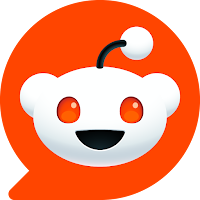Papier d'Armenie is a curious incense novelty - it is blotting paper soaked in alcohol-dissolved benzoin, which is then folded and lit. I've wanted to try it for some time, and when I was at IncenseMan to get a packet of Padmini Pakeezah, I saw they had some Papier d'Armenie. Sadly the original scent (Arménie) was sold out, so I got this Rose instead. At £6.49 for 36 strips which last approx 3 minutes each it's not cheap, and certainly not good value for money. But the company, Papier d'Armenie, has been making this product in the suburbs of Paris continuously since 1885, making them one of the oldest incense houses in the world. And it's such a charming and unusual product (though not quite unique - there's also Eritrean Paper, Carta d'Armenia, papers sold by the now defund Fragrance & Sens, HappySurroundings, Buvard d'Encens, L'Atelier d'Eva, Holistherba, etc - though it is possible that most of those are actually made by Papier d'Armenie in France or Carta Aromatica Eritrea in Italy) that it has to be tried and experienced.
The story is that Papier d'Arménie was developed in the late 19th century by a French chemist, Auguste Ponsot, who, after visiting Armenia where he saw the locals burning benzoin resin to refresh and cleanse their homes, created the incense paper with pharmacist Henri Rivier. The company is currently run by Mireille Schwartz, Ponsot's great-granddaughter. Some sources indicate that for a while, after Papier d'Arménie was launched in 1885, that other companies made and sold "aromatic healing papers". Carta Aromatica Eritrea in Italy was founded in 1927, and along with Papier d'Armenie in France are the only two companies remaining.
There is a pleasant scent of vanilla with a light floral lift of powdery rose on the paper. This is somewhat repeated on the burn, though it is unfortunately accompanied by the smell of burning paper. The burn is very quick - it's over in around 3 minutes, and is quite light, with only a minimal residual scent, though it does have an attractive cleansing effect on the room.
The story is that Papier d'Arménie was developed in the late 19th century by a French chemist, Auguste Ponsot, who, after visiting Armenia where he saw the locals burning benzoin resin to refresh and cleanse their homes, created the incense paper with pharmacist Henri Rivier. The company is currently run by Mireille Schwartz, Ponsot's great-granddaughter. Some sources indicate that for a while, after Papier d'Arménie was launched in 1885, that other companies made and sold "aromatic healing papers". Carta Aromatica Eritrea in Italy was founded in 1927, and along with Papier d'Armenie in France are the only two companies remaining.
There is a pleasant scent of vanilla with a light floral lift of powdery rose on the paper. This is somewhat repeated on the burn, though it is unfortunately accompanied by the smell of burning paper. The burn is very quick - it's over in around 3 minutes, and is quite light, with only a minimal residual scent, though it does have an attractive cleansing effect on the room.
On the whole this is a charming and novel incense, which I am enjoying, though - while pleasant - the fragrance is fairly simple and limited, and a tad spoiled by the burning paper smell. But for an incense hunter like me, this is one that has to be experienced.
 |
| Discussed on Reddit in 2023 |
 |
| Reviewed in Germany (the "Tradition" scent) |































